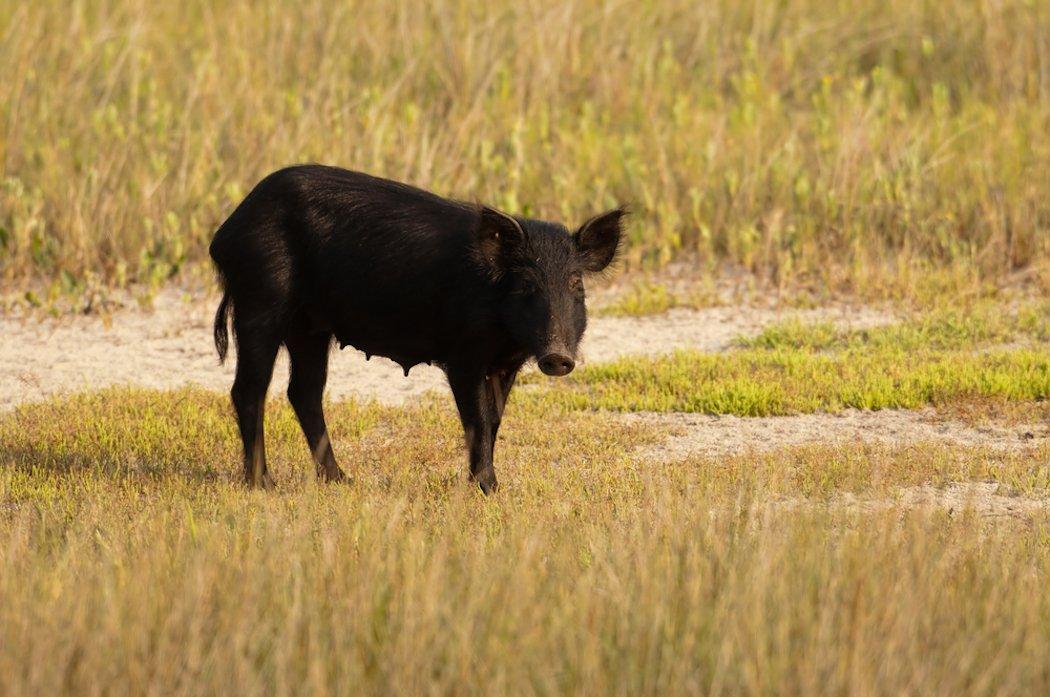Are You Battling Hogs Where You Deer Hunt?
Hogs. They're a huge problem not only for agriculture but also for deer and deer hunting, too. I recently attended the 2017 Quality Deer Management Association Convention where I sat in on a seminar. During that talk, Dr. Glen Gentry with LSU and the Bob R Jones Idlewild Research Station displayed just how bad the problem has become.
Hogs were brought into North America in the 1500s by Spanish explorers, Gentry said. Since then they have continued to expand their range throughout the continent, including Mexico and Canada.
While hogs have been around for nearly 500 years, it wasn't until the 20th century that they really started to become an issue. And since the turn of the 21st century, the problem has only compounded. Why? For starters, populations are finally reaching the point where, exponentially speaking, they're exploding to the point where hogs are continuously having to spread to new territories. Furthermore, and assuredly a bigger issue on the population management front, is that people are releasing hogs into the wild (which is illegal). These two things are making it virtually impossible for state agencies, biologists and land managers to maintain numbers, let alone reduce them.
Feral swine population management isn't easy, Gentry said. We have to remove 70 percent of the population each year just to keep the population from growing. Gestation period for hogs are approximately 115 days, which means most sows will produce two litters each year.
In other words, sound the retreat guys and gals. We're overrun. In all seriousness, now is not the time to retreat, though. It's time to take action. Sadly, it's taking a very large toll on deer hunting success rates. Why? Deer actively avoid areas inhabited by hogs.
Hog presence is the No. 1 reason why hunters do not have success while deer hunting in Louisiana (and other southern states), Gentry said. That's unacceptable. We need all hunters [and trappers] to get on board and help manage this invasive species.
And by getting on board, he doesn't necessarily mean just hunting them. He means all hunters joining ranks on a united front and implementing both trapping and hunting methods to help control hog populations.
Hunting hogs — even with the use of helicopters — is not effective enough to maintain, let alone decrease, pig populations, Gentry said. Trapping is more effective. But hogs are smart and react and adapt to trapping quickly if not caught the first time.
Because of this, it's important to only close the gate on the traps when the entire group of hogs have entered the enclosure. Be patient. If all of the hogs haven't entered the trap, don't close the hatch.
Now, many of you may have seen the recent talk of using poison to manage hogs in Texas. Personally, I can't get behind that. Yes, hogs are an issue. But I just can't support the use of poisons to remove feral swine.

Gentry also mentioned that an oral contraception would be a better and possibly more effective alternative than poison, but that the science hasn't come far enough yet to implement this strategy. Until then, he believes that poison is the best, and only, way to manage the growing hog problem.
What do you believe? Poison? Or no poison? It's a very big, hot debate and discussion on ethics, for sure.
Read: See How Feral Hogs Are Destroying Turkey Nests
Are you a deer hunter thirsty for knowledge? Check out our stories, videos and hard-hitting how-to's on deer hunting.








